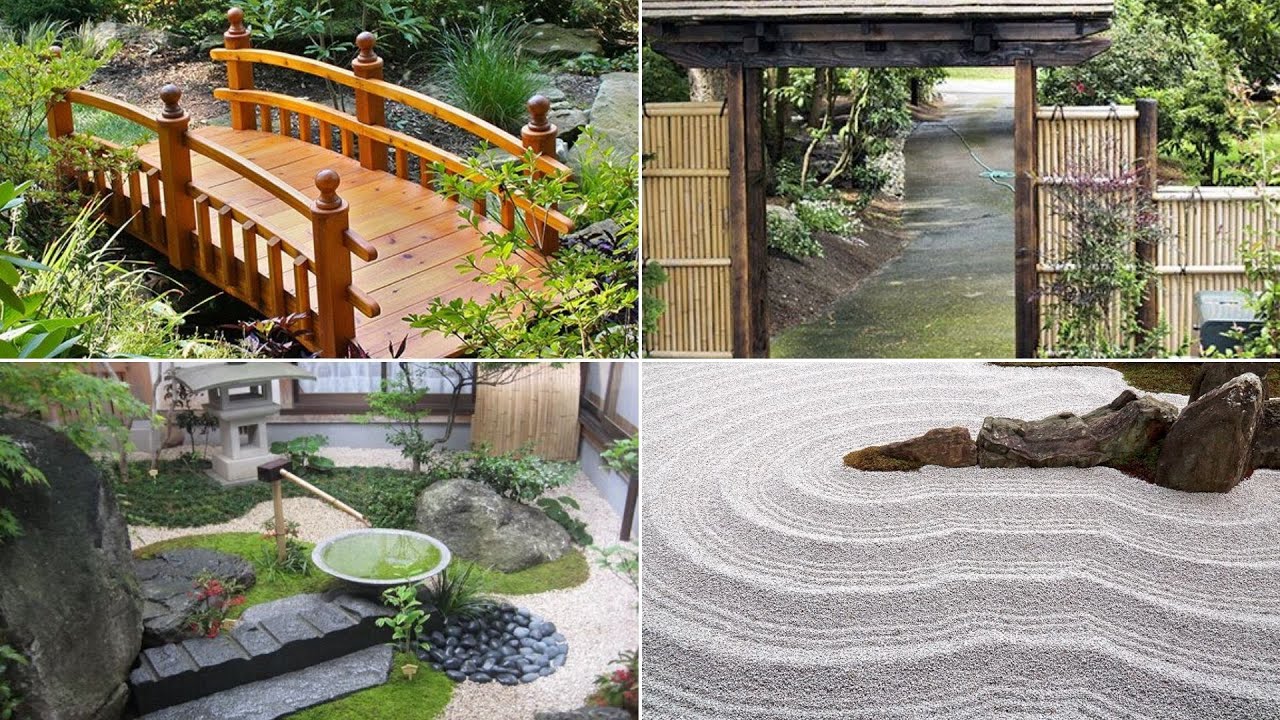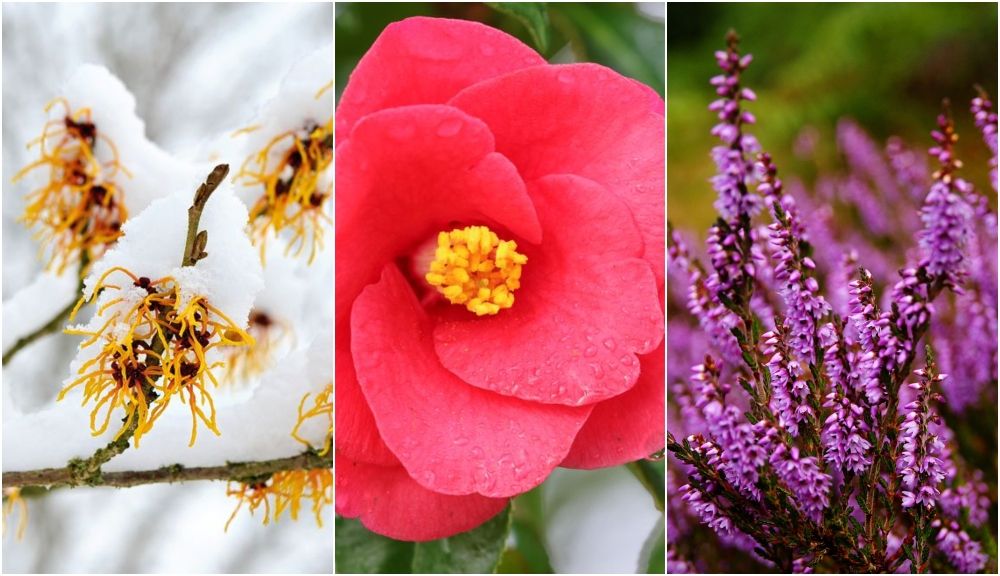If you’ve always been captivated by the elegance and tranquility of Japanese gardens, then why not bring that peaceful atmosphere into your own backyard? In this article, you will discover the secrets to creating a stunning Japanese garden that will transport you to a world of serenity and harmony. From carefully selected plants and stone arrangements to the soothing sound of running water, you’ll learn all the essential elements needed to transform your outdoor space into a mini oasis of Zen. Get ready to embark on a journey of beauty and relaxation as you explore the art of creating a Japanese garden in your very own backyard.
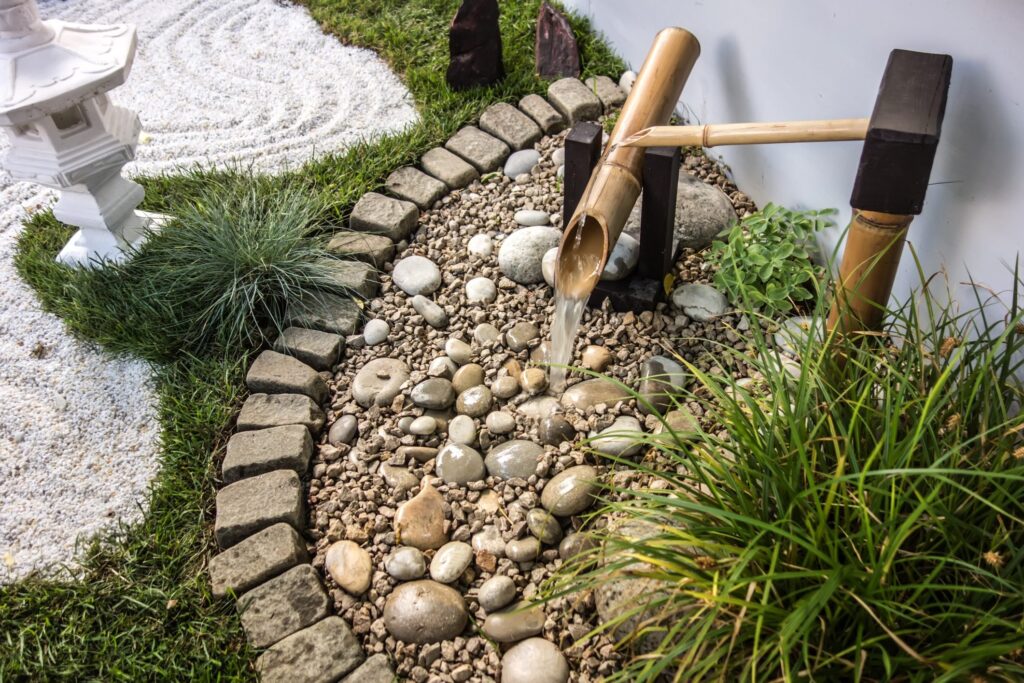
This image is property of www.familyhandyman.com.
Choosing the Right Location
When it comes to creating a Japanese garden, location is key. Before you start designing and planning, take the time to carefully assess the space available in your backyard. Consider the size and shape of the area, as well as any existing structures or trees that may need to be incorporated into your design.
One important aspect to consider is the amount of sunlight and shade that the location receives. Japanese gardens often thrive in areas with dappled sunlight, as this creates a tranquil and serene atmosphere. Look for a spot in your backyard that provides a balance of sun and shade throughout the day.
In addition to sunlight and shade, take the time to evaluate the soil conditions in your chosen location. Japanese gardens often feature a variety of plants and trees that have specific soil requirements. Conduct a soil test to determine the pH level and nutrient content of your soil. This will help you select the right plants and make any necessary amendments to ensure their success.
Researching Traditional Japanese Garden Styles
To create an authentic and visually appealing Japanese garden, it is essential to research and understand the different traditional styles that have influenced this art form. Start by exploring the principles of Zen gardens, which are characterized by simplicity and minimalism. Zen gardens often feature carefully raked gravel or sand patterns, along with carefully placed rocks and sparse plantings.
In addition to Zen gardens, there are several other styles to consider, such as the tea garden, courtyard garden, and stroll garden, to name a few. Each style has its own unique elements and characteristics that create a specific ambiance and evoke different emotions. Learn about their origins, features, and the feelings they are designed to evoke.
As you research different styles, identify specific elements that you would like to incorporate into your own garden. This may include specific types of plants, certain rock arrangements, or traditional structures such as Japanese tea houses or torii gates. Knowing which elements you want to include will help guide your design process.
Designing the Layout
Once you have a good understanding of the traditional Japanese garden styles, it’s time to start designing the layout of your own garden. Begin by creating a rough sketch of your backyard, taking into account the existing structures and trees.
Next, define different zones and areas within your garden. This will allow you to create distinct spaces that serve different purposes. For example, you may want to have a meditation area, a space for a tea house, and a section dedicated to a koi pond. By defining these zones, you can create a sense of harmony and balance within your garden.
As you plan the flow and pathways of your garden, consider how visitors will move through the space. Japanese gardens often feature winding paths that encourage exploration and a sense of discovery. Incorporate curves and twists in your pathways to create a more serene and natural feel.
Selecting Authentic Plants and Trees
Plants play a crucial role in Japanese gardens, adding color, texture, and seasonal interest. As you select plants and trees for your own garden, it is important to understand the role that they play in creating the desired aesthetic.
Evergreens are an integral part of Japanese gardens, providing year-round interest and symbolizing longevity. Consider incorporating plants like Japanese maple, pine, azaleas, and bamboo. These species will add depth and character to your garden while maintaining the desired traditional aesthetic.
In addition to evergreens, consider incorporating traditional Japanese trees, such as sakura (cherry blossom), ume (plum), or momiji (Japanese maple). These trees are not only beautiful but also have cultural significance in Japanese society. Their delicate flowers and vibrant foliage can create a stunning focal point within your garden.
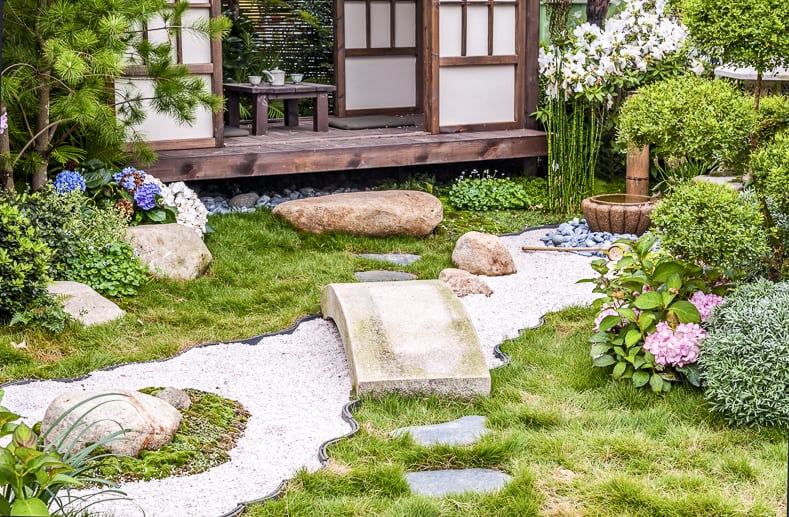
This image is property of www.gardenersoasis.com.
Adding Water Features
Water is an essential element in Japanese gardens, symbolizing purity, tranquility, and the passage of time. Consider adding a tranquil pond or koi pond to your garden. The sound of trickling water and the sight of graceful koi swimming can create a peaceful and serene atmosphere.
If space permits, you may also want to integrate waterfalls or streams into your design. These features add movement and sound to your garden while further enhancing the overall tranquility.
Incorporating Traditional Structures and Elements
To truly capture the essence of a Japanese garden, consider incorporating traditional structures and elements. Building a Japanese tea house can create a space for relaxation and reflection. This structure can serve as a focal point in your garden, as well as a place to host tea ceremonies or simply enjoy a cup of tea in a serene setting.
Another traditional element to consider is a stone lantern. These lanterns are often placed strategically throughout the garden, providing soft lighting and adding a touch of elegance. They can be a focal point or simply accentuate your pathway or a specific area within your garden.
Installing a Torii gate is yet another way to incorporate traditional Japanese elements into your garden. These gates are often placed at the entrance of a garden or at the entrance to a specific area within the garden. They symbolize the transition from the mundane to the sacred, inviting visitors to experience a different realm.

This image is property of cdn.homedit.com.
Using Gravel and Rocks for Symbolism
In Japanese gardens, gravel and rocks are not only decorative but also symbolic. Gravel is often used to create simple and clean aesthetics, adding a sense of tranquility and calmness to the design. Consider using gravel to create pathways or to fill areas of your garden that require a minimalist approach.
Rocks, on the other hand, are used to create balance and harmony within a garden. They represent mountains or islands and are strategically placed to evoke a natural and serene atmosphere. Choose rocks of different sizes and shapes to create interest and depth. Additionally, consider incorporating moss to soften the edges of the rocks and add a touch of greenery.
Integrating Zen Elements for Meditation
For those seeking a peaceful and meditative space, integrating Zen elements into your garden design is essential. Start by creating a designated meditation space, whether it’s a small seating area or a secluded corner of your garden. This space should be simple and serene, free from clutter and distractions.
Consider incorporating sand or raked gravel patterns within your meditation space. These patterns have a calming effect and can help focus the mind during meditation. The act of raking the patterns can also be a meditative practice in itself.
Adding bamboo fountains or wind chimes can enhance the Zen atmosphere and create soothing sounds as the wind gently blows. The natural materials and gentle sounds will contribute to the overall tranquility of your Japanese garden.
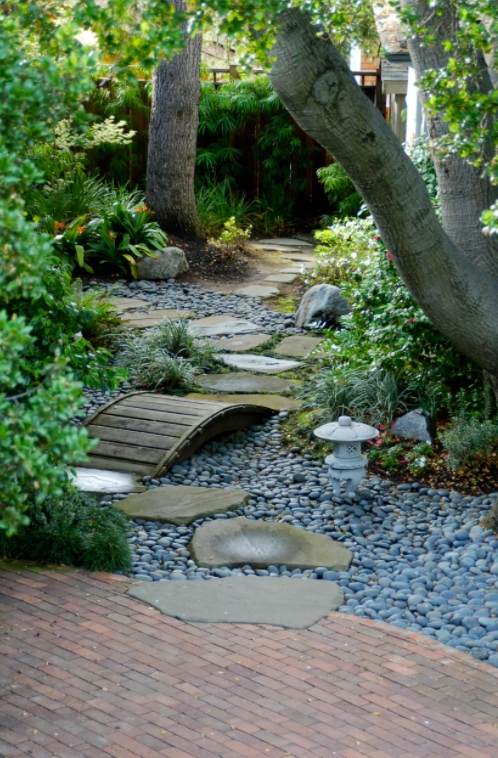
This image is property of cdn.homedit.com.
Enhancing the Garden with Artistic Accents
To add a touch of aesthetic appeal and visual interest, consider incorporating artistic accents into your Japanese garden. Ornamental statues or sculptures can be strategically placed throughout the space, providing focal points and inviting contemplation.
Bamboo fences or screens can also enhance the beauty of your garden while providing privacy and creating a sense of enclosure. These natural structures can be used to define different areas or to hide unsightly elements in your backyard.
Finally, consider using decorative stepping stones to guide visitors through your garden. These stones can be arranged in various patterns or shapes, adding a sense of whimsy and playfulness to the overall design.
Maintaining and Caring for Your Japanese Garden
Once your Japanese garden is complete, it is important to establish a regular maintenance routine to keep it looking its best. Regular pruning and trimming of plants and trees will help maintain their desired shape and encourage healthy growth.
Controlling weeds is also important to ensure that they do not detract from the overall beauty of your garden. Regular weeding and mulching will help suppress weed growth and keep your garden looking neat and well-maintained.
Pest management is crucial to protect your plants and trees from damage. Monitor your garden regularly for any signs of pests or diseases, and take appropriate action to address the issue.
Lastly, it’s important to regularly clean and protect any water features in your garden. This may involve removing debris, checking water levels, and maintaining the health of any fish or plants that reside in your pond. By keeping your water features clean and well-maintained, you can enjoy their beauty and tranquility for years to come.
In conclusion, creating a Japanese garden in your own backyard can be a fulfilling and rewarding endeavor. By carefully choosing the right location, researching traditional styles, designing the layout, selecting authentic plants and trees, adding water features, incorporating traditional structures and elements, using gravel and rocks for symbolism, integrating Zen elements for meditation, enhancing the garden with artistic accents, and maintaining and caring for your garden, you can create a beautiful and tranquil space that reflects the beauty and harmony of traditional Japanese gardens. Enjoy the process and the peacefulness that your Japanese garden brings to your everyday life.
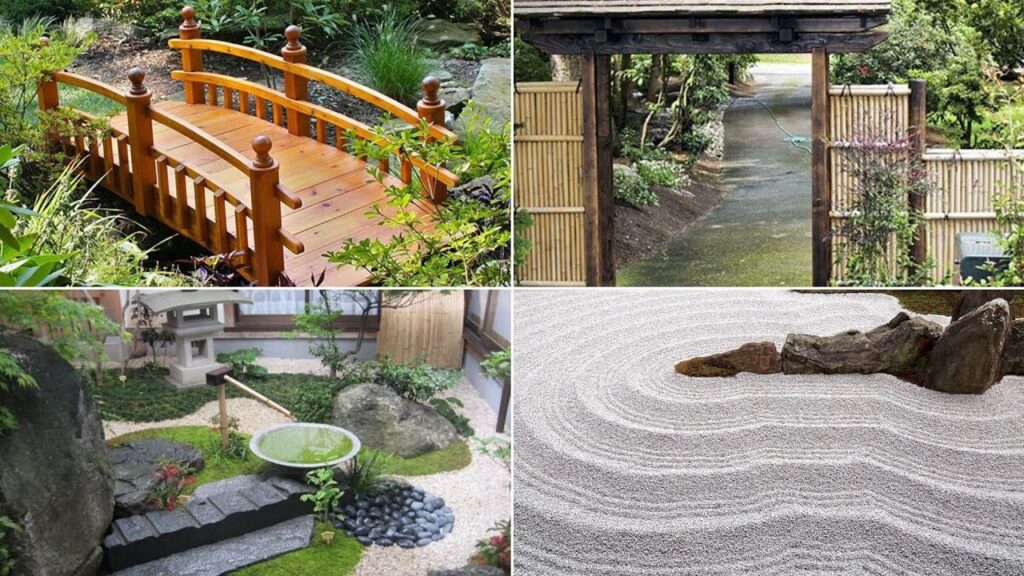
This image is property of i.ytimg.com.

